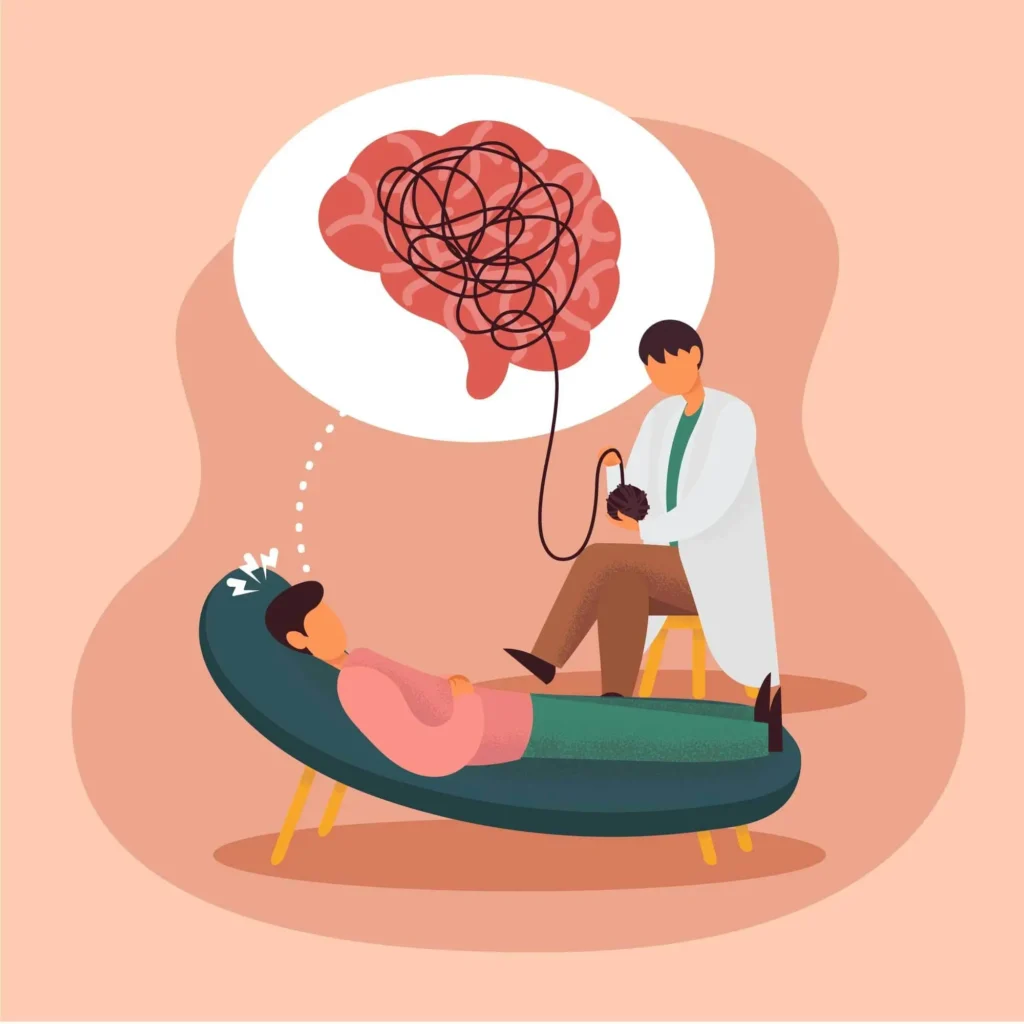Introduction:
ADHD (Attention Deficit hyperactivity disorder) is the most common disease in America. In 2020, data revealed an increase in ADHD diagnoses among individuals over 35 and children aged 10 to 14. Suicide ranks as the second leading cause of death in America, with passive suicidal ideation contributing to these tragic events. Today, we delve into exploring its symptoms, causes, and treatment, and discussing management strategies for patients with ADHD experiencing passive suicidal thoughts.
Passive Suicidal Ideation
It is a neurological disease. Having this disease, a person may suffer from constant suicidal thoughts. Although these thoughts are not attacking consciously. The patients may feel them in their subconscious routine, such as day-to-day tasks. Statements such as ‘I wish I were never born’ or ‘I don’t want to live anymore; I can’t take it’ are examples of suicidal thoughts.
A patient has frequent thoughts of death and suicide without a plan or attention to harming themselves. Although passive suicidal thoughts do not always lead to suicide, they do have an impact.
We should take these suicidal thoughts seriously and consult with the therapist for treatment.
Common Symptoms
The symptoms are not general and can’t be identified as a disease. However, there are several thoughts and experiences that can lead to this disease.
- People who have insomnia or they sleep too much are at risk of passive suicidal thoughts.
- Sleeping problems are often referred to as mental illness.
- A visible loss of interest or pleasure in things that used to be joy could be a sign of passive suicidal thoughts.
- Mood swings and increased irritability may show up.
- Changes in appetite that are big enough to make you lose or gain weight can be a sign.
- People who are having passive suicidal thoughts might not want to make plans for the future because they don’t see themselves having one.
- There may be clear signs of cognitive problems, such as trouble focusing and making decisions.
- You can directly express passive suicidal thoughts by discussing your feelings of depression or making comments that indicate a desire to end your life. Even if you don’t have a clear plan.
- Physical complaints that can’t be explained, like headaches and tiredness. It may happen simultaneously as mental problems.
Managing passive suicidal ideation in individuals with ADHD

Treatment of people diagnosed with ADHD to stop passive suicidal thoughts requires a complex and individualized approach. When two conditions come together like this, they will create complex problems.
The first step is to get professional help and assessment. Mental health professionals can do detailed evaluations and develop individualized solutions like therapy or counseling. Medical professionals may also help to treat the symptoms of ADHD, which can have a good effect on emotional health. Cognitive behavioral therapy (CBT), which is known to work, helps people with ADHD and suicidal thoughts that aren’t active. CBT gives people a structured and helpful way to deal with problems by assisting them to recognize and change negative thought habits and improve their coping and problem-solving skills. It’s just as important to build a strong support network. Emotional support comes from friends, family, and peers. They create an atmosphere where people feel comfortable talking to each other without fear of judgment.
Depression/passive-suicidal-ideation
Both create a challenging situation for a patient that demands care and proper treatment. Depressed people may face sadness, helplessness, and a loss of interest in things that used to interest them. In passive suicidal ideas, it’s possible to have thoughts of death without a clear plan or intention to act on them. These thoughts can make the mental pain that comes with depression worse, so they need to be managed in a specific way.
People who are depressed and people who are close to them need to be able to spot the signs of passive suicide thoughts. Symptoms may include:
- Changes in how you sleep.
- Pulling away from social activities.
- Showing signs of hopelessness.
Dealing with these signs immediately is important to keep things from worsening and create a more supportive setting.
Most of the time, treatment methods include both professional help and personal ways of dealing with problems. Therapy or counseling is very important because it gives people a safe place to discuss their feelings and find ways to deal with them.
Treatment

The treatment involves developing a comprehensive and individualized treatment plan aimed at addressing the root cause of these thoughts. The most important treatment is to seek help from a therapist. Mental health professionals, like psychiatrists, psychologists, and counselors, do thorough evaluations to learn about each person’s unique situation and determine the best way to help them.
1. Psychotherapy:
Cognitive behavioral therapy (CBT) helps people recognize and change harmful thinking. It gives useful ways to deal with problems and focuses on changing habits and thinking healthier. Dialectical Behavior Therapy (DBT) merges cognitive-behavioral techniques with mindfulness, aiding individuals in managing emotions effectively and improving interpersonal relationships.
2. Medications:
Antidepressants are one type of medication that a medical professional may prescribe to help alleviate the depression and anxiety often associated with passive suicidal thoughts. The choice of medication depends on the individual’s symptoms and needs, and it is made in consultation with a medical professional.
3. Supportive interviews:
It’s very important to build a strong network of support. Support groups like friends and family can help. It understands you emotionally. People in this network can talk about their feelings without worrying about being judged because of open communication.
4. Safety Planning:
Working with mental health workers to make a safety plan is very important. As part of this plan, you will find your triggers, coping techniques, and emergency contacts to be prepared for when you feel down.
5. Regular Monitoring and Following Up:
Checking in with mental health workers regularly is important to see how things are going and make any needed changes to the treatment plan. Changes could involve modifying therapy approaches, adjusting medication regimens, or implementing additional support measures.
6. Lifestyle changes:
Making healthy changes in your lifestyle, like working out regularly, eating well, and getting enough sleep, can help your mental health.
Conclusion:
In summary, individuals with ADHD, depression, and passive suicidal thoughts require a comprehensive approach that addresses both conditions concurrently. Early intervention relies on recognizing signs of passive suicidal thoughts, such as alterations in sleep patterns, social withdrawal, and manifestations of hopelessness. You need professional help like cognitive behavioral therapy (CBT), medicine, and a strong support network to get better. Opening up about mental health and removing shame from conversations are important parts of making a space where healing can happen. To deal with passive suicidal thoughts, it’s important to understand, show respect, and stay committed to mental health care. Early action and a team-based approach can build a more resilient and helpful future.








